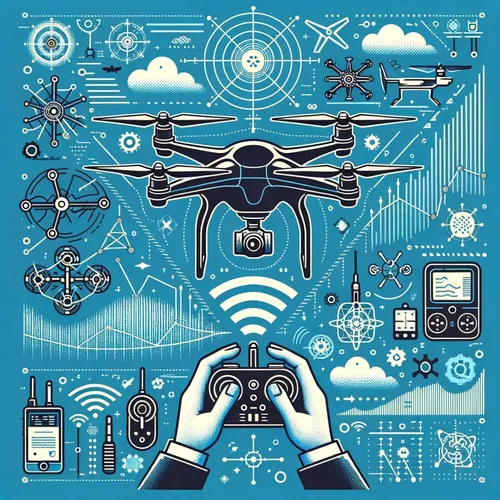Drones Gone Wild: Soaring Profits, Plummeting Paperwork, and Sizzling Scandals in the Skies!
- Author
- Quiet. Please
- Published
- Wed 30 Jul 2025
- Episode Link
- https://www.spreaker.com/episode/drones-gone-wild-soaring-profits-plummeting-paperwork-and-sizzling-scandals-in-the-skies--67186549
This is you Commercial Drone Tech: Enterprise UAV Solutions podcast.
Enterprise drone technology is rapidly redefining how key industries tackle daily challenges and seize opportunities for growth. In construction, drones provide real-time aerial site monitoring, enabling project managers to track progress, improve safety, and spot potential issues before they escalate. Agriculture operators leverage drones for crop health assessments and precision spraying, resulting in significant improvements in yield prediction and input efficiency. Energy companies now use drones for detailed inspection of wind turbines, solar farms, and pipelines, dramatically reducing human risk and cutting inspection times from days to hours, as recently highlighted by FlytBase, whose autonomous drones for site security and industrial inspections are shaping global standards.
The return on investment for enterprises is increasingly well-documented. For example, a 2025 case study shared by FlyFreely revealed a construction firm reduced its daily operating time by twelve percent after switching to a comprehensive fleet management platform. Similarly, VOTIX demonstrates that cloud-based mission management yields immediate visibility into drone utilization and performance, turning maintenance and compliance from a paperwork nightmare to a seamless process.
Fleet management software has become indispensable for organizations scaling from one or two drones to dozens. Platforms like Aloft and FlytBase now offer FAA-approved airspace integration, centralized reporting, pilot and asset management, secure data storage, and direct API connectivity to business systems. This means that drone-collected data can flow automatically into existing enterprise applications for asset management, geospatial analysis, or incident response, closing the loop from field sensor to actionable business insight.
Compliance and security have taken center stage in 2025. Governing authorities in the United States, Europe, and Asia have continued to update rules around remote identification, data localization, and operator certification. In response, leading software provides robust, enterprise-grade data security, automated audit logs, and built-in regulatory workflows. Many, such as Aloft, offer integrations for LAANC airspace authorizations and real-time risk assessments, ensuring that expanded UAV operations are both lawful and secure.
Recent news underscores current momentum. Earlier this month, a major agricultural cooperative announced it had equipped one hundred farms with AI-powered drone analytics, boosting profitability. Meanwhile, a global construction firm launched a drone-in-a-box solution for automated perimeter monitoring, and new FAA guidelines on urban drone operations promise even broader commercial adoption.
For organizations seeking to implement drone programs, practical action items include investing in enterprise-class fleet management platforms to future-proof scaling, partnering with drone service providers for pilot training and compliance, and planning for seamless integration with existing IT infrastructure. Reviewing sector-specific case studies can help clarify expected benefits and outline potential pitfalls.
Looking forward, the future of enterprise drone technology is driven by autonomous flight, advanced AI on the edge, swarming capabilities, and deeper integration into enterprise analytics platforms. The adoption curve is steep and the business case more compelling with each passing quarter.
Thanks for tuning in. Come back next week for more insights into tomorrow’s most impactful technologies. This has been a Quiet Please production and for more, check out Quiet Please Dot A I.
For more http://www.quietplease.ai
Get the best deals
